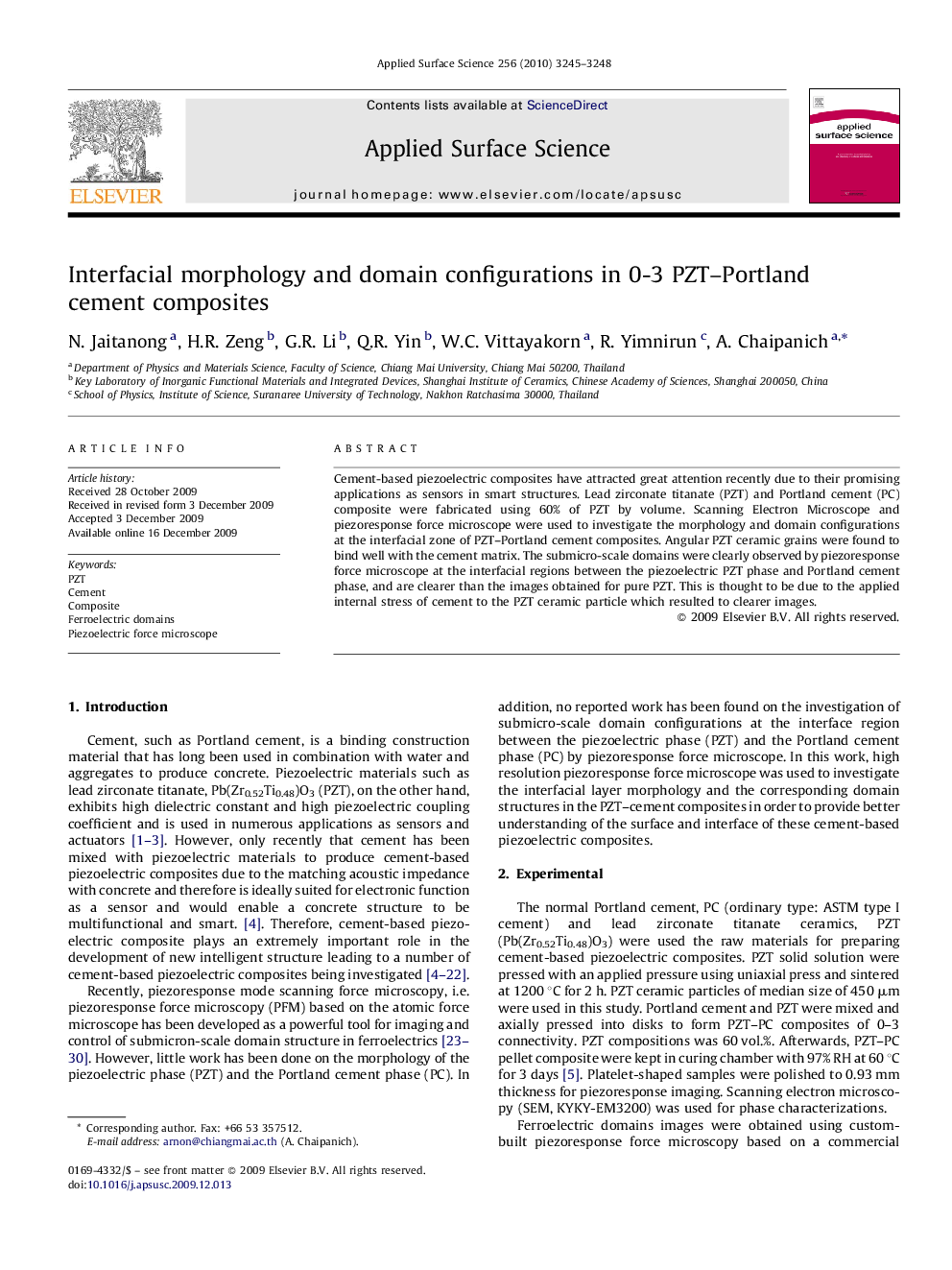| Article ID | Journal | Published Year | Pages | File Type |
|---|---|---|---|---|
| 5368773 | Applied Surface Science | 2010 | 4 Pages |
Cement-based piezoelectric composites have attracted great attention recently due to their promising applications as sensors in smart structures. Lead zirconate titanate (PZT) and Portland cement (PC) composite were fabricated using 60% of PZT by volume. Scanning Electron Microscope and piezoresponse force microscope were used to investigate the morphology and domain configurations at the interfacial zone of PZT-Portland cement composites. Angular PZT ceramic grains were found to bind well with the cement matrix. The submicro-scale domains were clearly observed by piezoresponse force microscope at the interfacial regions between the piezoelectric PZT phase and Portland cement phase, and are clearer than the images obtained for pure PZT. This is thought to be due to the applied internal stress of cement to the PZT ceramic particle which resulted to clearer images.
